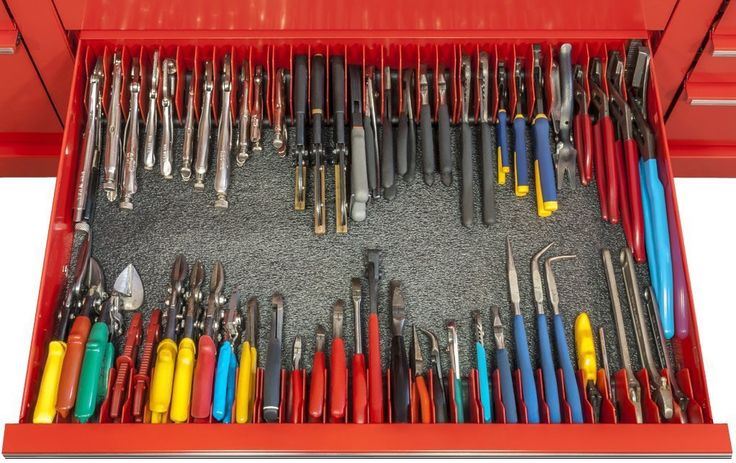Thermostats are essential components in homes, cars, and various appliances, controlling temperature and ensuring comfort and energy efficiency.
You will need to understand how thermostats work to fully take advantage of them and maintain a comfortable environment while using them.
We have all this and more explained in this article. It may be a long read, so brace up!
Table of contents
- What is a Thermostat?
- Types of Thermostats
- The Function of a Thermostat
- What are the components of a Thermostat?
- Are there Benefits of Thermostats?
- What are the Applications of Thermostats?
- How Does a Thermostat Work in a Home?
- How Does a Thermostat Work in a Car?
- How Does a Thermostat Change Temperature?
- How Does a Thermostat Work in Electric Appliances?
- How Do Thermostats Know the Temperature?
- How can I Set up A Thermostat? How Thermostat works
- Mechanical vs. Digital Thermostats: difference?
- Which Thermostat is the Best for me
- How can I Reset Thermostats in Commercial Kitchen Equipment?
- Conclusion
- References
- Recommendations
What is a Thermostat?
A thermostat is a device that automatically maintains or regulates a desired temperature setting in a home, car, or other enclosed spaces.
It senses the ambient temperature and sends signals to a heating or cooling system to adjust the temperature accordingly.
Thermostats are designed to maintain a comfortable temperature range, preventing excessive heating or cooling, which can be wasteful and costly.
Types of Thermostats
There are two main types of thermostats:
Mechanical thermostats: These traditional thermostats use a bimetallic strip or a filled bulb to sense temperature changes. As the temperature changes, the bimetallic strip or filled bulb expands or contracts, triggering a switch that turns the heating or cooling system on or off.
Digital thermostats: These modern thermostats utilize electronic sensors and digital displays to provide more precise temperature control and programming options. They often offer features like programmable schedules, setback temperatures, and energy-saving modes.
The Function of a Thermostat
The only function of a thermostat is that it automatically maintains a desired temperature setting. It carries out this function by sensing the ambient temperature and sending signals to a heating or cooling system to adjust the temperature accordingly.
Thermostats are designed to maintain a comfortable temperature range, preventing excessive heating or cooling.
What are the components of a Thermostat?
Thermostats typically have two main components:
Sensor: This component detects the ambient temperature. In mechanical thermostats, a bimetallic strip or filled bulb expands or contracts with temperature changes, triggering a switch. In digital thermostats, electronic sensors, such as thermistors or thermocouples, measure temperature accurately and precisely.
Control unit: This component interprets the sensor’s signals and sends instructions to the heating or cooling system. It may also incorporate features like programmable schedules, setback temperatures, and energy-saving modes.
Are there Benefits of Thermostats?
- Temperature regulation: Thermostats maintain a comfortable temperature range, preventing excessive heating or cooling.
- Energy efficiency: By optimizing temperature control, thermostats can reduce energy consumption and utility costs.
- Comfort: Thermostats contribute to a comfortable living environment by maintaining the desired temperature.
- Convenience: Thermostats, especially digital ones, offer programmable schedules and easy-to-use interfaces for convenient temperature control.
- Safety: Thermostats prevent overheating or overcooling, which can pose safety hazards.
What are the Applications of Thermostats?
Thermostats are widely used in various applications, including:
- Homes: Thermostats regulate temperature in residential homes, ensuring comfort and energy efficiency.
- Commercial buildings: Thermostats maintain comfortable temperatures in offices, stores, and other commercial spaces.
- Industrial settings: Thermostats control temperature in factories, warehouses, and other industrial environments.
- Cars: Thermostats regulate engine temperature in automobiles, ensuring optimal performance and longevity.
- Refrigerators and freezers: Thermostats maintain consistent temperatures in refrigerators and freezers, preserving food quality.
- Ovens and stoves: Thermostats control heating elements in ovens and stoves for precise cooking.
Thermostats play a crucial role in regulating temperature and optimizing energy consumption in various settings, contributing to comfort, safety, and efficiency.
How Does a Thermostat Work in a Home?
In a home, a thermostat is typically connected to the heating and cooling systems, either directly or through a control panel. When the thermostat senses a temperature difference from the set point, it sends a signal to the appropriate system.
For heating, the thermostat turns on the furnace to raise the temperature. For cooling, it activates the air conditioner to lower the temperature.
How Does a Thermostat Work in a Car?
In a car, the thermostat plays a crucial role in regulating engine temperature. It monitors the coolant temperature and sends signals to the engine control module (ECM) to adjust the coolant flow and fan speed.
This ensures that the engine operates within the optimal temperature range for efficient performance and longevity.
How Does a Thermostat Change Temperature?
Thermostats typically have two main controls: temperature adjustment buttons and a mode switch.
The temperature adjustment buttons allow you to set the desired temperature, while the mode switch lets you choose between heating, cooling, or fan-only modes.
When you adjust the temperature, the thermostat sends a signal to the heating or cooling system to adjust the temperature accordingly.
How Does a Thermostat Work in Electric Appliances?
Thermostats are also found in various electric appliances, such as ovens, stoves, and refrigerators. In these appliances, the thermostat regulates the temperature of the heating element or cooling unit.
For example, in an oven, the thermostat controls the heating element to maintain the desired baking temperature.
How Do Thermostats Know the Temperature?
Thermostats utilize different sensing mechanisms to determine the ambient temperature:
Bimetallic strips: These strips are composed of two different metals that expand and contract at different rates when heated or cooled. This differential expansion triggers a switch that indicates the temperature change.
Filled bulbs: These bulbs contain a temperature-sensitive liquid or gas that expands or contracts with temperature changes. This change in volume is detected and converted into an electrical signal.
Electronic sensors: Modern thermostats use electronic sensors, such as thermistors or thermocouples, to measure temperature accurately and precisely. These sensors convert temperature changes into electrical signals that the thermostat interprets.
How can I Set up A Thermostat? How Thermostat works
Thermostats are essential devices that regulate temperature in homes, ensuring comfort and energy efficiency. Proper thermostat operation can help save energy and maintain a comfortable living environment.
Here’s a guide on how to set your thermostat, including instructions for both mechanical and digital thermostats.
Setting a Mechanical Thermostat
Mechanical thermostats are commonly found in older homes and provide a simple interface for adjusting temperature settings. Follow these steps to set up a mechanical thermostat:
- Locate the thermostat: Identify the thermostat in your home. It’s usually mounted on a wall in a central location, such as a hallway or living room.
- Identify the controls: Mechanical thermostats typically have two main controls: a temperature adjustment dial and a mode switch.
- Set the mode: Turn the mode switch to the desired mode, such as “Heat,” “Cool,” or “Fan.”
- Adjust the temperature: Rotate the temperature adjustment dial until it points to the desired temperature.
- Verify operation: Observe if the heating or cooling system turns on as expected. If not, check the thermostat batteries or any power connections.
Tips for Using a Mechanical Thermostat
- Energy-saving settings: For energy efficiency, set the thermostat to lower temperatures when you’re away or asleep.
- Avoid drastic adjustments: Make gradual temperature changes to avoid overloading the heating or cooling system.
- Regular maintenance: Replace thermostat batteries annually and clean the thermostat to ensure optimal performance.
Setting a Digital Thermostat
Digital thermostats offer more advanced features and provide a user-friendly interface. Follow these steps to set a digital thermostat:
- Locate the thermostat: Identify the digital thermostat in your home. It’s usually mounted on a wall in a central location.
- Access the settings menu: Press the “Menu” or “Settings” button on the thermostat.
- Choose the heating or cooling mode: Select the desired mode, such as “Heat,” “Cool,” or “Auto.”
- Set the temperature: Use the arrow buttons or keypad to adjust the temperature to the desired setting.
- Program the thermostat: Many digital thermostats allow programming for different times of the day or days of the week. Access the programming menu and set the desired temperatures and schedules. This option is optional.
- Save settings: Exit the settings menu or press the “Save” button to apply the changes.
Tips for Using a Digital Thermostat
- Explore features: Familiarize yourself with the various features and settings available on your digital thermostat.
- Utilize programming: Program the thermostat to adjust temperatures automatically based on your schedule, maximizing energy efficiency and comfort.
- Regular updates: Check for firmware updates for your digital thermostat to ensure optimal performance and security.
By following these guidelines, you can effectively set your thermostat, regardless of whether it’s a mechanical or digital model. Proper thermostat operation can help you maintain a comfortable home environment while saving energy and reducing utility costs.
Mechanical vs. Digital Thermostats: difference?
Mechanical thermostats are traditional devices that use a bimetallic strip or a filled bulb to sense temperature changes. As the temperature changes, the bimetallic strip or filled bulb expands or contracts, triggering a switch that turns the heating or cooling system on or off.
Digital thermostats utilize electronic sensors and digital displays to provide more precise temperature control and programming options. They often offer features like programmable schedules, setback temperatures, and energy-saving modes.
Which Thermostat is the Best for me
The best thermostat for you will depend on your individual needs and preferences. Here are some factors to consider:
Accuracy: Digital thermostats generally offer more precise temperature control than mechanical thermostats.
Features: Digital thermostats typically offer more advanced features, such as programmable schedules and energy-saving modes.
Ease of use: Mechanical thermostats are often simpler to operate than digital thermostats.
Cost: Digital thermostats generally cost more than mechanical thermostats.
How can I Reset Thermostats in Commercial Kitchen Equipment?
Resetting thermostats in commercial kitchen equipment may vary depending on the specific equipment model. However, the general process typically involves the following steps:
- Locate the thermostat: Identify the thermostat on the appliance. It’s usually located on the control panel or near the heating or cooling element.
- Identify the reset button or switch: Look for a button or switch labeled “Reset” or “Clear.”
- Press and hold the reset button or switch: Press and hold the reset button or switch for a few seconds, as indicated in the equipment manual.
- Verify operation: Check if the appliance’s heating or cooling function has reset to the default settings.
If you encounter any difficulties or have specific concerns regarding thermostat reset procedures, consult the equipment manual or contact the equipment manufacturer for further assistance.
Conclusion
Thermostats play a vital role in regulating temperature in homes, cars, and various appliances, ensuring comfort, efficiency, and safety. Understanding the principles of thermostat operation allows users to optimize their use and maintain a comfortable and energy-efficient environment.




